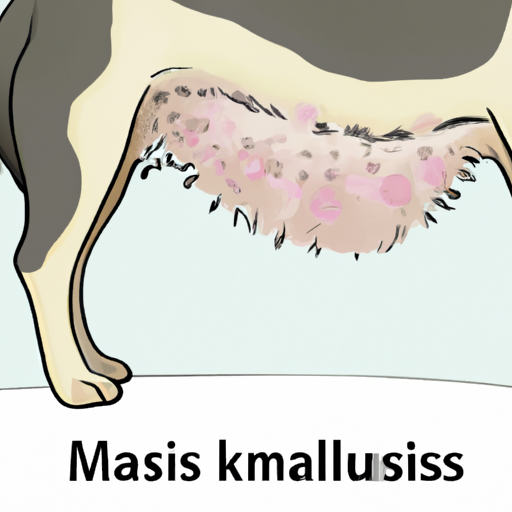1. Introduction
You’re a caregiver, always ready to look after your loved ones, may they be human or furry. As a dog owner, it’s of utmost importance to understand the potential ailments that could affect your pet. One such condition is mastitis. But what does mastitis look like in dogs? Let’s delve deeper into this topic.
2. Understanding Mastitis in Dogs
Mastitis is an inflammatory condition that affects the mammary glands of dogs. It’s most common in female dogs who are nursing a litter, but it can also occur in non-lactating dogs. The condition can be painful and, if left untreated, could lead to severe complications.
| Symptoms of Mastitis | Description |
|---|---|
| Swelling and redness | The affected mammary gland(s) may appear swollen and red. |
| Pain | Your dog may show signs of discomfort or pain when the area is touched. |
| Pus or discharge | There may be pus or a bloody discharge from the nipple. |
| Fever | Your pet may have a fever, indicating an infection. |
| Behavioral changes | Your dog may seem lethargic or show reduced appetite. |
3. Causes and Risks
Mastitis is typically caused by bacteria that enter the mammary gland, often through a cracked or injured nipple. The risk is higher in lactating females, but it can also occur in dogs that are not nursing.
- Age: Older dogs are more susceptible to mastitis.
- Breastfeeding: Dogs nursing a large litter are at a higher risk.
- Injuries: Any trauma to the mammary glands can increase the risk.
4. Treatment and Prevention
If you notice signs of mastitis in your dog, it’s vital to seek veterinary attention immediately. Treatment often involves antibiotics to fight the infection and pain relief to manage discomfort. In severe cases, surgery may be necessary.
To prevent mastitis, ensure your dog’s living area is clean and check their nipples regularly for any signs of injury or infection. If your dog is nursing, check the puppies’ nails to prevent them from causing injury to the mother’s nipples.
5. When to Seek Help
While mastitis is treatable, it’s essential to act quickly to minimize discomfort and prevent complications. As a caregiver, you’re in a unique position to notice any changes in your dog’s behavior or physical condition. If your dog shows any signs of mastitis, seek veterinary care immediately.
FAQs
Q: Can male dogs get mastitis?
A: While it’s rare, male dogs can develop mastitis, often due to injury or infection.
Q: How long does it take for mastitis to resolve?
A: With prompt treatment, most dogs recover within 2-3 weeks.
Q: Can mastitis affect my dog’s ability to nurse her puppies?
A: Yes, mastitis can affect milk production. In severe cases, it may be necessary to hand-feed the puppies.
Remember, as a caregiver, your vigilance plays a crucial role in your pet’s health. Understanding conditions like mastitis empowers you to provide the best care for your four-legged family member.



